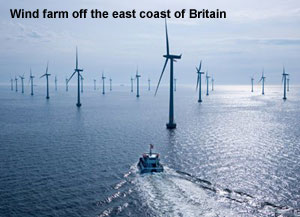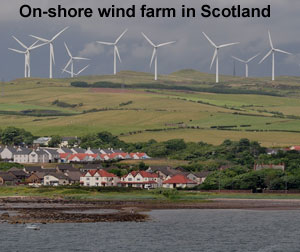
Al Gore: The development of Green energy requires incentives for patient money

FRONT PAGE
Site Search
About us

Scottish Green energy
Green cities initiative
North America's greenest cities
Africa's water crisis
Green mayors
Urban ecological footprint
Greenhouse gas emissions
Urban energy saving (USA)
Green finance
Gas drilling in eastern US cities
Cities' green policies
US cities to go green
Cities and biodiversity
Europe's greenest cities
Toronto's Rouge Park
Mexico City's Green Plan
Mexico City garbage disposal
Sustainable communities
Liveable cities
Saving energy by using contrast
Great Lakes initiative
Issues facing megacities
Dubai & Shanghai development
Pros and cons of biofuels
Smart growth in US cities
Greenest US cities
Green schools
Most polluted US cities
Sustainable communities
under threat

Worldwide | Elections | North America | Latin America | Europe | Asia | Africa |

























Al Gore says Green energy
needs ‘patient’ investment
By Brian Baker, Senior Correspondent
20 October 2011: The second Low Carbon Investment Conference at the end of September 2011 in Edinburgh focussed strongly on offshore wind energy – specifically unlocking investment and cutting the costs of production. This is seen by the Scottish Government as essential to its aim of re-industrialisation through renewable energy. Cutting the costs of offshore wind relative to other sources is imperative if Scotland is to make progress quickly enough to become a manufacturing and exporting country in this growing subset of renewable energy infrastructure and production.
Edinburgh Chamber of Commerce, which organised the event in association with the Scottish Government and corporate sponsors secured former US Vice President Al Gore for a keynote address. Gore has made climate change and making the transition to a low carbon economy his principal interest in the last ten years and he brought to the event a sense of urgency backed by some very up to the minute images and analysis.
 Gore’s message to the energy sector was to get urgent in the transition because the divergence between climate and the weather we are all experiencing now has narrowed to the extent that the two things can now be spoken of as if they are the same. “The basic physics of climate change has been known for a long time. In the last two years there have been clear signals of hydrological cycle changes. Flood events are now much larger and more intense than previously. Water vapour above the oceans has increased by 4 per cent in the last thirty years.”
Gore’s message to the energy sector was to get urgent in the transition because the divergence between climate and the weather we are all experiencing now has narrowed to the extent that the two things can now be spoken of as if they are the same. “The basic physics of climate change has been known for a long time. In the last two years there have been clear signals of hydrological cycle changes. Flood events are now much larger and more intense than previously. Water vapour above the oceans has increased by 4 per cent in the last thirty years.”
Gore told delegates that “in the US the cost of solar PV installations has fallen and new installations doubled between 2009 and 2010. If the cost is brought down the growth in clean energy can be very powerful.”
“The short-term approach of financial investors is a serious problem we have to address. Thirty years ago the average period of equity investments was seven years. Today its seven months. Even pension funds are less patient now. We must have incentives for patient money.”
The drive to reduce costs to make the emerging wave and tidal technologies and off-shore wind competitive is at the top of business and political agendas. With its rejection of nuclear the SNP administration in Scotland has committed to renewables more than most governments and it aspires to major research and development and manufacturing roles in the emerging clean energy world.
Alex Salmond, re-elected as First Minister since the last Low Carbon Investment conference in Edinburgh was upbeat in his keynote address. “I am increasingly confident we can move to commercial delivery in wave and tidal in the next few years.”
Highlighting synergies across the energy sector as an asset for his small country he said” our oil and gas technology and knowledge could help reduce offshore wind costs by 10-20 per cent.” And he claimed Scotland is now the only country to provide support throughout the process.
 Scottish Enterprise Chief Executive Lena Wilson explained more: “Scotland is the only country providing to companies support all the way from research and development to manufacturing. Collaboration and partnership has been a theme in the year since the first low carbon energy conference here. Scottish Enterprise (a Government economic development agency) is very focussed on the supply chain for offshore wind. Our competitors are moving fast and we need to deliver quickly on collaborative investments and initiatives.”
Scottish Enterprise Chief Executive Lena Wilson explained more: “Scotland is the only country providing to companies support all the way from research and development to manufacturing. Collaboration and partnership has been a theme in the year since the first low carbon energy conference here. Scottish Enterprise (a Government economic development agency) is very focussed on the supply chain for offshore wind. Our competitors are moving fast and we need to deliver quickly on collaborative investments and initiatives.”
Cities are major players in the clean energy transition, which is likely to rely on enhancement in energy efficiency at the points of use if it is to happen.
No city is more aspirational than Munich in this regard. It aims to create the conditions in which the total energy use within the city boundaries in 2025 will be from renewables.
Deputy Mayor Hep Montzader told the business leaders and others that it was useless to create a green city without a good municipal society.
“If we want to tackle energy re-organisation the cities must play a decisive role. In Munich we set out in 1995 on a path towards becoming a sustainable municipality. We have had to bring our population with us and at first we had to integrate all the players in to an alliance to act on climate protection. Since 1995 we (Social Democrats and Greens) have been re-elected three times.”
“We give money to support private householder investments in improving their homes. Cities can set examples and provide citizens with standards.”
“We have said to locally based companies that if they have CO2 reduction ideas which they will implement we will subsidise them to provide exemplar projects for other businesses and inhabitants in Munich.”
“Innovation, good public relations and good collaboration are a good way forward,” said Montzader.
Munich is able to use the leverage of ownership of its city energy utility. The City Council chose to retain control of it in the 1990’s when several cities in Germany sold them off.
Monica von Schmalensee is the Chief Executive of White Architects, which have been responsible for several low carbon buildings in Scandinavia.
She told the delegates in Edinburgh that “Western Harbour in Malmo and Hammarby Sjostad in Stockholm are driven by a green agenda and low carbon use targets. Local governments set high standards but what then happened was that industry competed with each other to do even better.”
“The market in Sweden is now going towards both good quality environments and low carbon emissions and lower costs and in the cities”.
“Bringing people together at a very early stage and using technical innovation of good quality is key to delivering low carbon solutions,” said Ms von Schmalensee.
Comment on this article
Read comments

